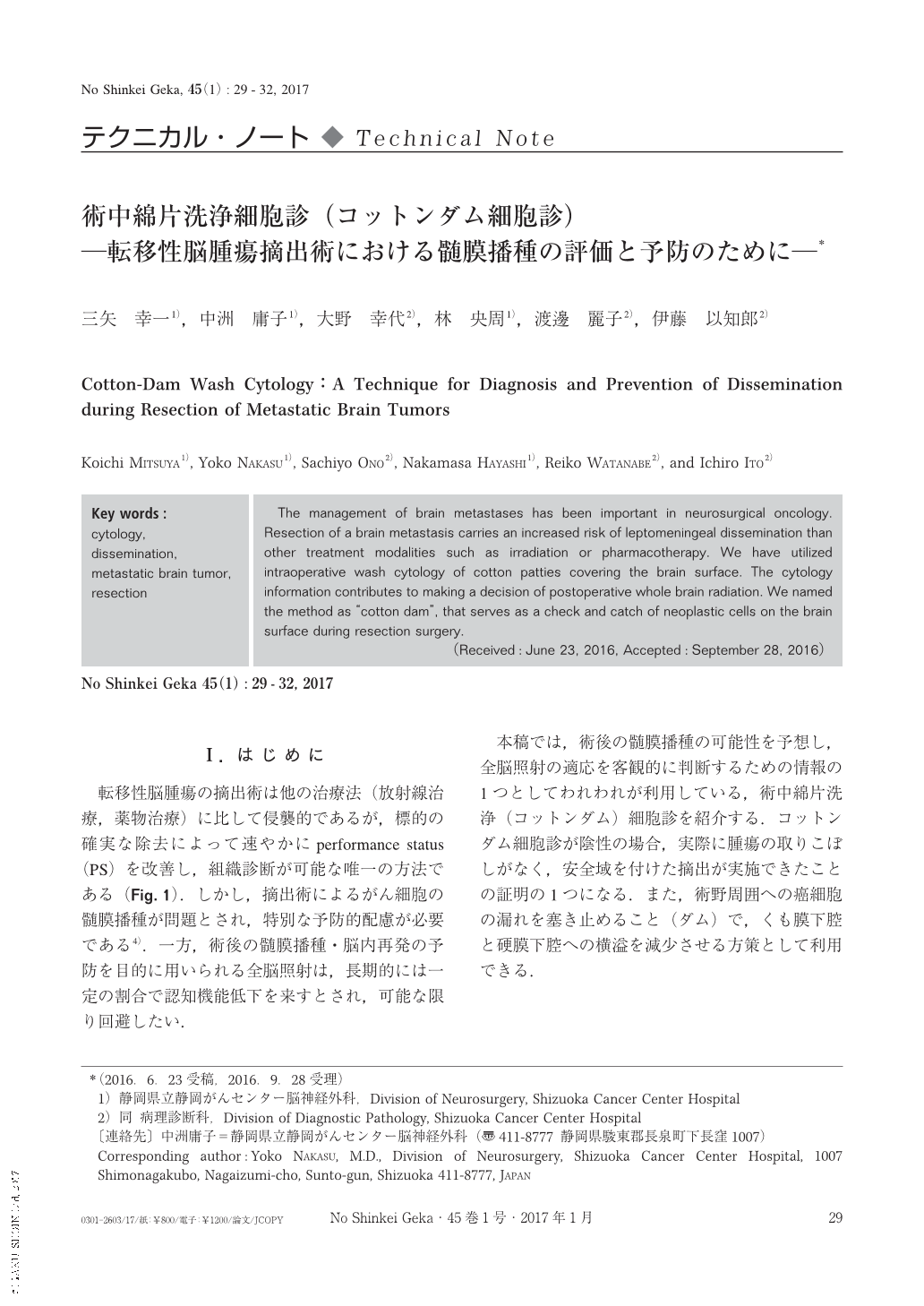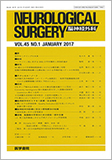Japanese
English
- 有料閲覧
- Abstract 文献概要
- 1ページ目 Look Inside
- 参考文献 Reference
Ⅰ.はじめに
転移性脳腫瘍の摘出術は他の治療法(放射線治療,薬物治療)に比して侵襲的であるが,標的の確実な除去によって速やかにperformance status(PS)を改善し,組織診断が可能な唯一の方法である(Fig.1).しかし,摘出術によるがん細胞の髄膜播種が問題とされ,特別な予防的配慮が必要である4).一方,術後の髄膜播種・脳内再発の予防を目的に用いられる全脳照射は,長期的には一定の割合で認知機能低下を来すとされ,可能な限り回避したい.
本稿では,術後の髄膜播種の可能性を予想し,全脳照射の適応を客観的に判断するための情報の1つとしてわれわれが利用している,術中綿片洗浄(コットンダム)細胞診を紹介する.コットンダム細胞診が陰性の場合,実際に腫瘍の取りこぼしがなく,安全域を付けた摘出が実施できたことの証明の1つになる.また,術野周囲への癌細胞の漏れを塞き止めること(ダム)で,くも膜下腔と硬膜下腔への横溢を減少させる方策として利用できる.
The management of brain metastases has been important in neurosurgical oncology. Resection of a brain metastasis carries an increased risk of leptomeningeal dissemination than other treatment modalities such as irradiation or pharmacotherapy. We have utilized intraoperative wash cytology of cotton patties covering the brain surface. The cytology information contributes to making a decision of postoperative whole brain radiation. We named the method as “cotton dam”, that serves as a check and catch of neoplastic cells on the brain surface during resection surgery.

Copyright © 2017, Igaku-Shoin Ltd. All rights reserved.


